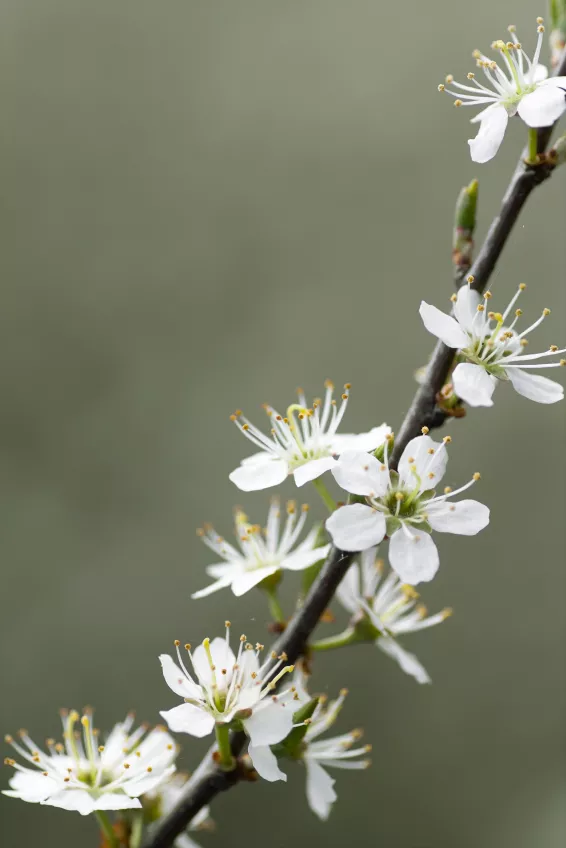- The growth habit
- flower and fruit
- location and climate
- Harvesting and use of the fruit
- tips and tricks
The Reto sloe is a refined new breed of the wild sloe, which comes up with particularly large and less acidic fruits than its wild relatives. If you have not planted this pretty shrub in your garden because of the numerous root suckers of the blackthorn, the Reto blackthorn is a good alternative.

The growth habit
Due to the refinement, the large-fruited sloe does not grow as a shrub, but as a small fruit tree. Uncut, it reaches a height of about three meters. Due to this slimmer growth, you can integrate the Reto sloe well into small gardens. It forms no root suckers and hardly any thorns.
flower and fruit
In early spring, before the leaves sprout, the dense white blossoms appear, which stand in attractive contrast to the dark bark of the trunk. The slightly almond-scented flowers are edible and are considered a valuable natural medicine. The dark blue fruits of this blackthorn are almost the size of a sour cherry. Since they contain less tannin than wild sloes, they taste pleasantly sweet and sour when raw and can be harvested before the first frost.
location and climate
The refined sloe Reto is not quite as frugal as the blackthorn in terms of soil. It prefers a warm, sufficiently moist location in the garden. Waterlogging should be avoided. This sloe loves nutrient-rich, calcareous substrate and thrives particularly well on sandy-stony loamy soil.
Harvesting and use of the fruit
You don't have to wait until the first frost to harvest the Reto sloe, you can eat the ripe sloe raw right away. The ripening process is complete when the skin of the fruit has turned a deep dark blue up to the stalk. The large fruits taste aromatically sweet and enrich the autumn fruit plate. The delicious fruits can also be used to make jam, wine or liqueur.
Both the flowers of the sloe and the fruit are considered to be gentle natural medicines because of their valuable ingredients. Due to the high vitamin C content, they strengthen the immune system.
tips and tricks
Enjoy a small glass of sloe juice every day during the winter months as effective protection against colds.
SKb